Last month I went clamming in the middle of a work day. I had been wanting do some Indigenous place-based learning as part of my PD and was seeking to attend a more formalized course in this area through NIC or the Dechinta Centre, but it did not seem like it was going to materialize. My preference would be to learn from and with an Indigenous educator, but as my PD time was approaching and I couldn’t seem to find an opportunity I reconsidered the situation. I live on Hornby Island, the unceded territory of the K’omoks and Pentlatch peoples. I have access to beautiful and varied land and landscapes. Could the land be my teacher? I have been receiving teachings from Indigenous people these last few months about the importance of our “non-human relations”. I wondered if I might be able to put myself in a situation where I could learn from and with the land.
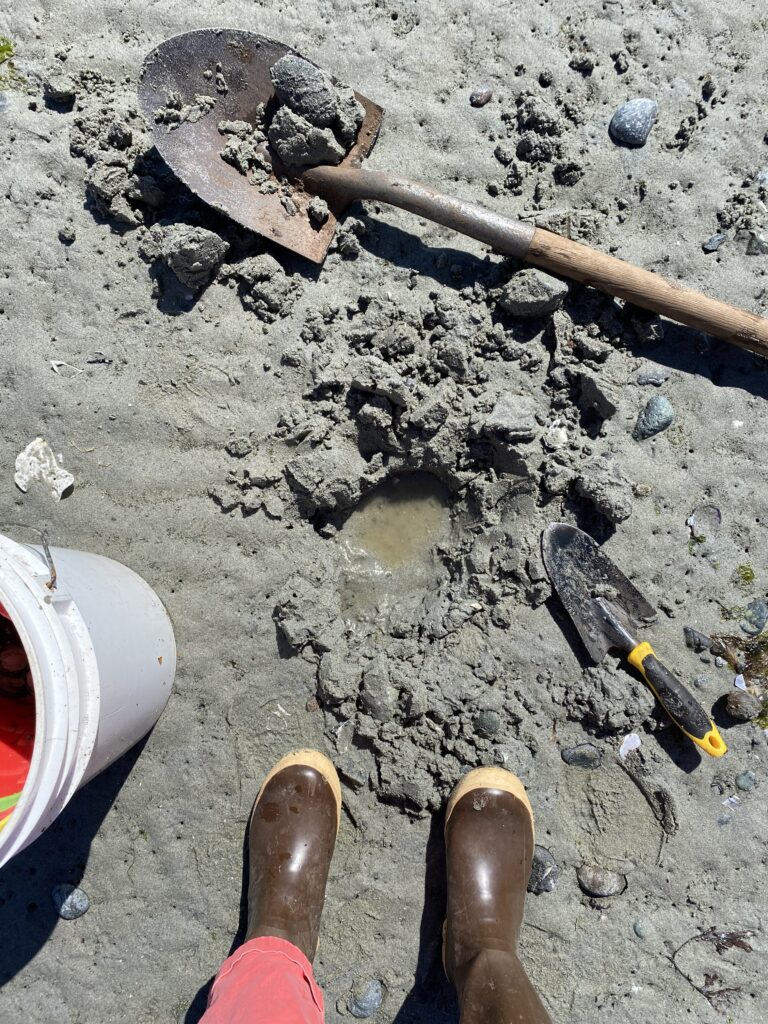
Thinking this over I decided that I wanted to go clamming. Occasionally I see other people on Hornby going clamming, or hear them talking about it, but not as often as people saying they collected oysters or went fishing. It’s something I’ve always wanted to try but never have, so I decided to take the plunge.
I looked up the tide charts and found a day with very low tide at midday and blocked out two hours on my Outlook Calendar: “Clamming”. I looked up which species were currently safe to harvest in my area on the BCCDC website. It turned out most clam species were closed (Butter Clams, Pacific Razor Clams, Horse Clams, Softshell Clams). Lucky for me Varnish Clams were still open (they are closed currently as I write this), and I knew there were plenty of those as their purple and brown shells were scattered all over my local beach where I was planning to do my harvesting.
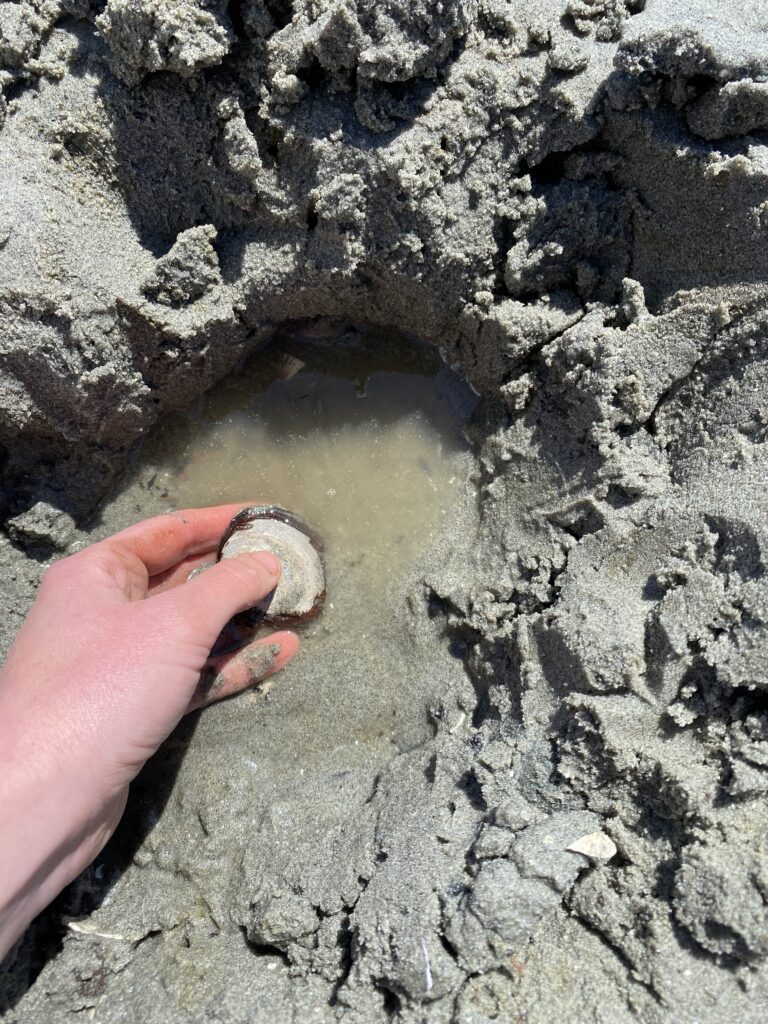
Prior to this I didn’t know the name of that purple and brown shelled clam or anything about them. Turns out Varnish clams and I have at least one thing in common, we are both invasive species. This gave me a lot to consider in the context of decolonial learning – that even land-based activities are happening in a highly impacted post-colonial context.
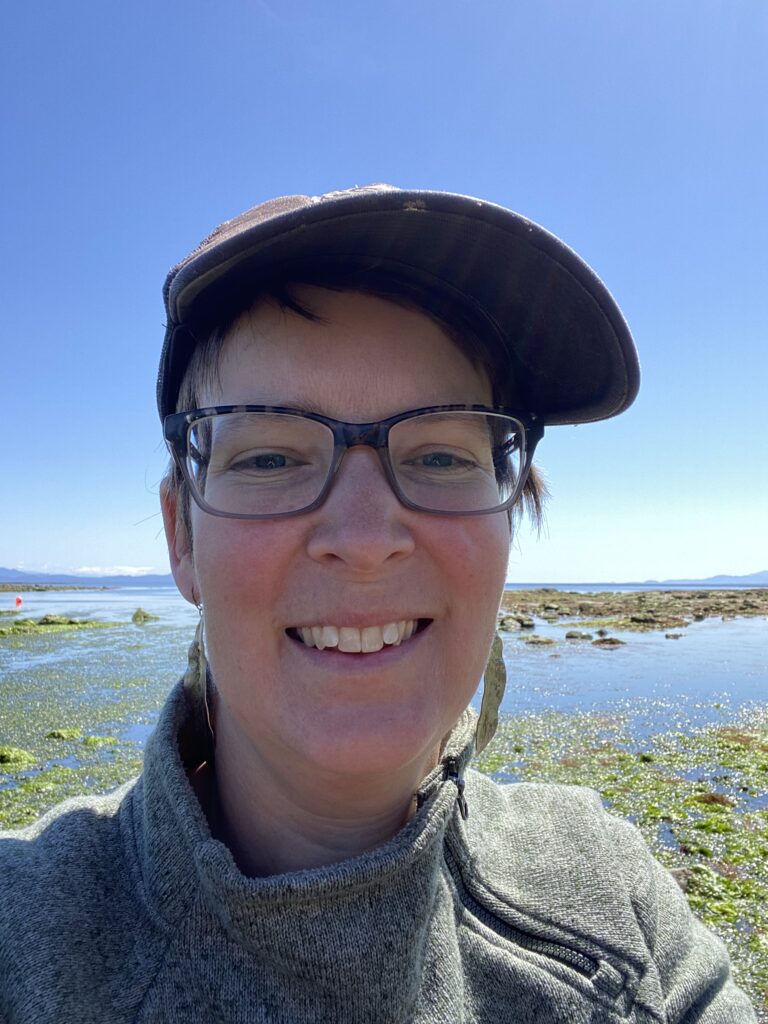
When my planned clamming day arrived it was warm and sunny. Mid morning I left my computer and gathered a few buckets, shovels and rakes of various sizes. I wasn’t quite sure what I was going to need. I considered what it meant to be undertaking this activity without the wisdom of an Indigenous guide who knew how to gather properly, or any local Hornby person for that matter, and the possible negative consequences. But I also trusted my own intuition, prior learnings about foraging and gathering, and the land as my teacher. It did feel strange but also highly appropriate to be walking away from my computer and out into the sunny day. As my teacher Dr. Joanna Fraser asked, as stated to her by Elder Paul Willie, “What if our clocks were set by the tide?”. …And also the weather, I wondered. What if we took more time to stop our computer work more often when the sun is out and food is available locally? Could this help us with the climate emergency we face?
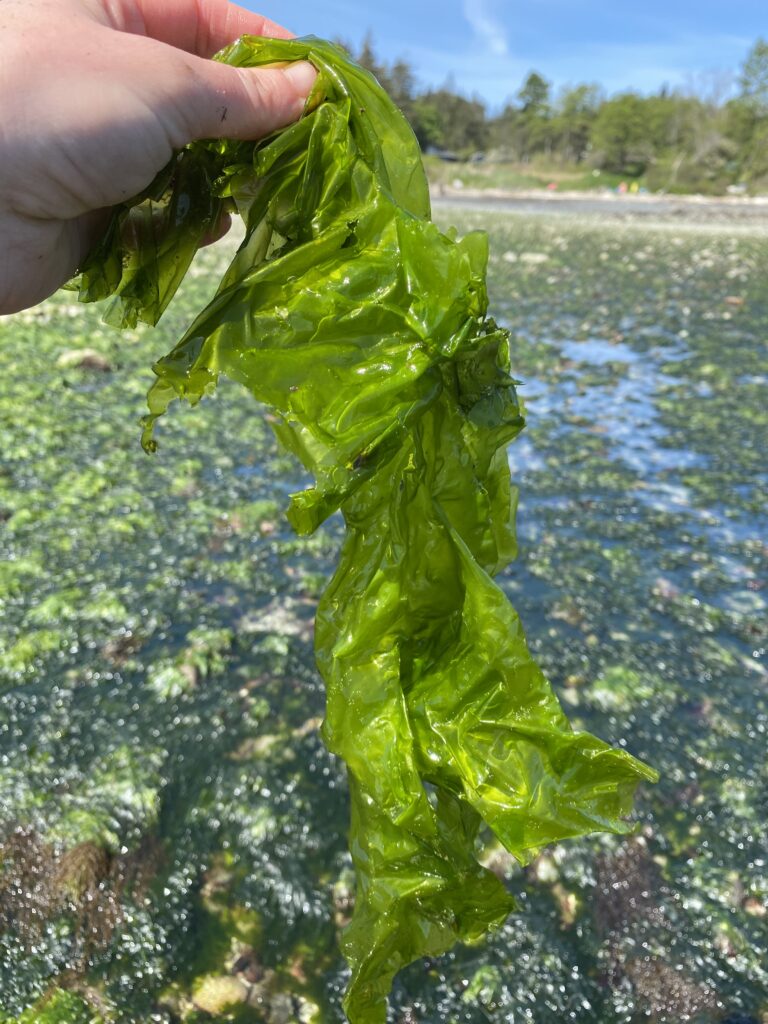
I headed down to the beach in my gumboots with my dog Clementine and had a look around. I could see those little holes in the sand indicating clams about mid-way down the beach. The water was much further down (turns out I didn’t need to wait for SUCH a low tide to go clamming). I found a decent looking spot and put down an offering of a tea bag of black tea, which is my most important daily drink (after water). After trying a few digging techniques with various shovels I figured out where the clams were, about 6 inches down. I was able to scrape the sand and pebbles away with a trowel and then grab them with my hand. It wasn’t long before I had enough for a meal. I headed down to the waterline to get a bucket-full of clean (ie. Sand-free) sea water to soak the clams in and found a few big red crabs and some beautiful fresh green sea lettuce. I left the crabs and harvested a bit of sea lettuce. Back at home I put the clams in a large yogurt container in the fresh sea water in the fridge for 24 hours. On the sunny deck I put out a black garbage bag and laid out the sea lettuce to dehydrate in the sun. The dehydration worked quite well but in the end the taste of the sea lettuce was too intense and bitter for me, so into the garden it went.
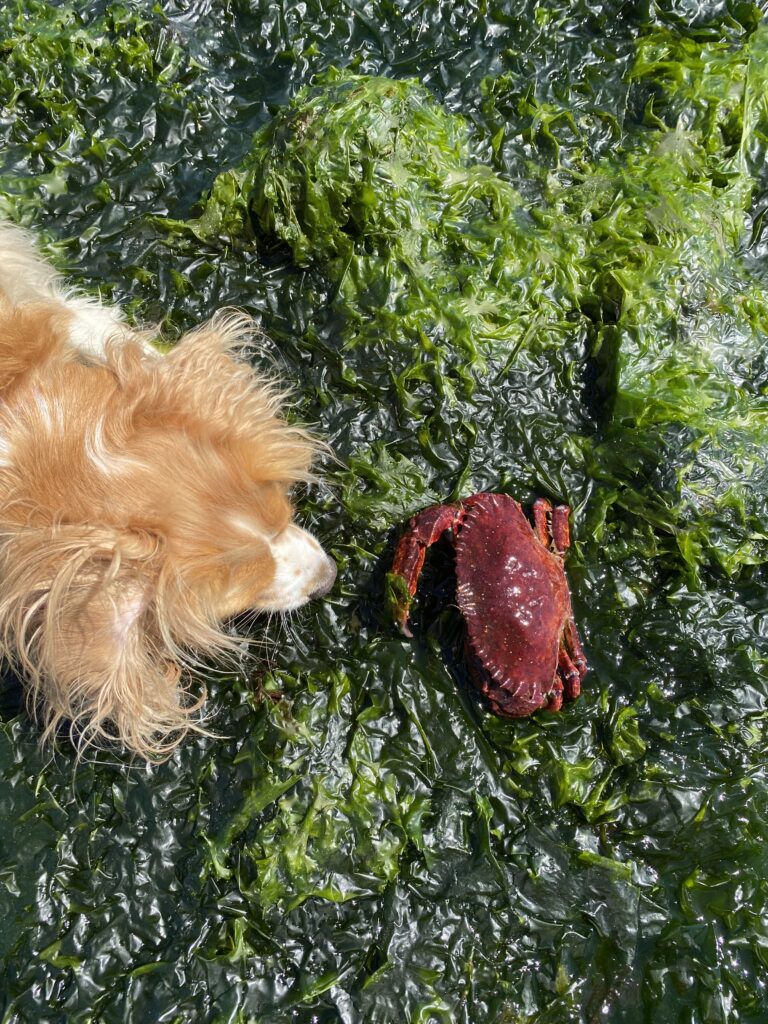
The next day I purchased a bottle of cheap white wine and gathered some chives and parsley from the garden. I gave the clams a good scrub and got rid of any open or weird looking ones, but most all of them were good. I chopped up a small bit of onion and garlic and heated it up in butter, then added a generous splash of white wine. Then I threw in the clams and put the lid on to steam for 10 minutes, adding the parsley and chives near the end. The clams tasted amazing! And a friend came by for a visit so I was able to share them with her (no one else in my home was interested).
Around the same time as my clamming adventure I listened to a podcast interview with Cheryl Bryce about the kwet’lal (Camas) Indigenous food system. Living on Hornby Island, in this time of spring abundance, with many Camas meadows spread across the island, and clams almost right outside my door, had me thinking about my own engagement with the local food system and how I walk and gather in the very same areas that have been cared for and stewarded by Indigenous people as part of the local food system since time immemorial. What does this mean for me now? In the time of climate change? As a settler? As an instructor? As a learner?
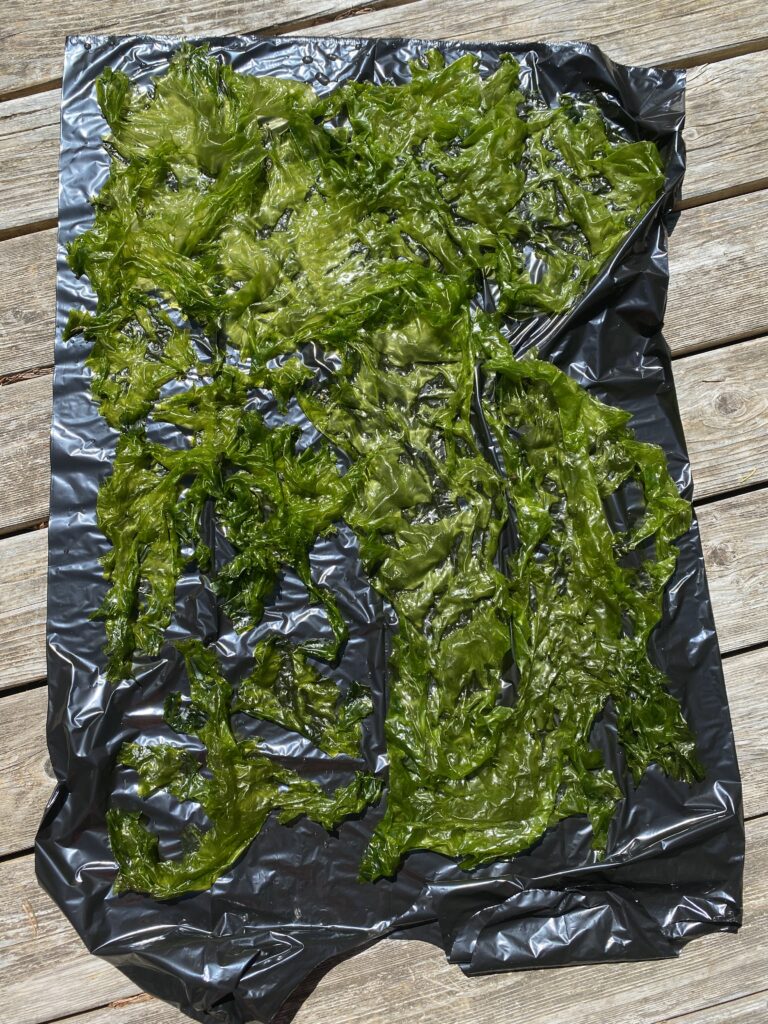
At the end of the day was this experience a delicious seafood dinner or an “Indigenized” learning experience? All on its own it was probably a yummy dinner. But for me this experience is woven together with other learning experiences with Indigenous teachers and students, in community, at the college, and also woven together with the thoughts and questions that turn over in my mind. On the surface there are learnings about slowing down, and going outside when the tide is low or the sun is out. On a deeper level there are lessons I am learning from the land about my place in the world and my relationships with both people and non-human relations. One thing I’m learning this year in the lessons I seek out from Indigenous teachers and the land is that sometimes the lessons are not immediately evident. They need to percolate and emerge at the right time. I don’t think I quite know the learning outcome of this PD activity yet, but I trust in my body, the beach, the clams, the tide, the sun, and my dog that the learning is becoming part of me and will show up when the time is right.
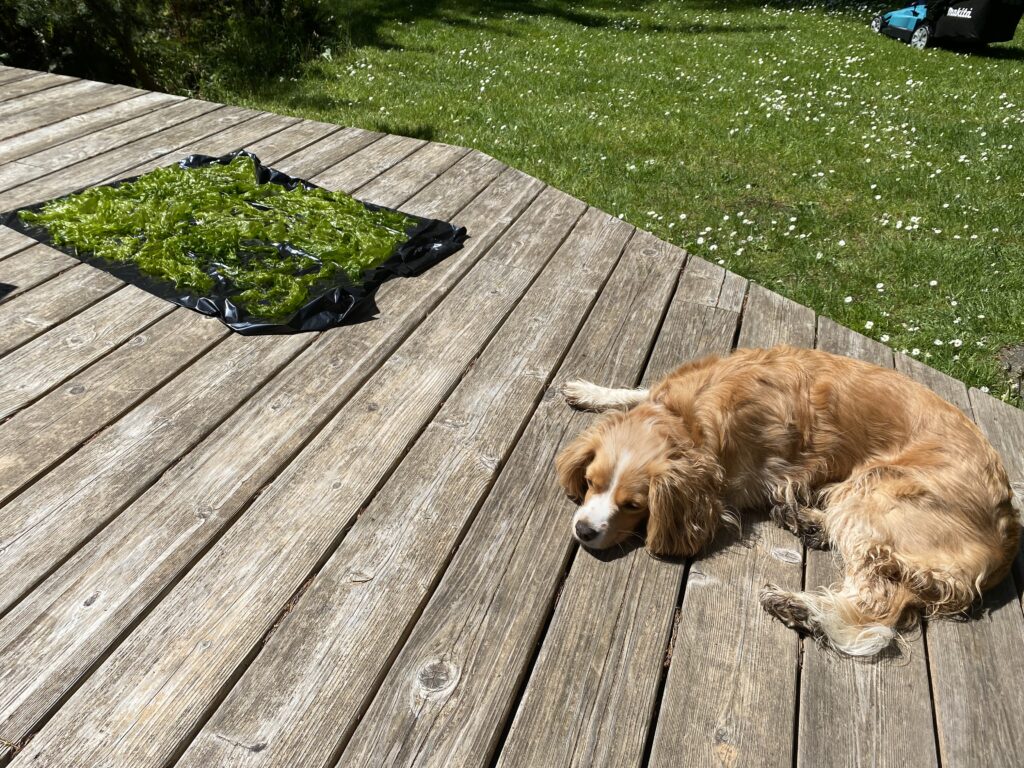
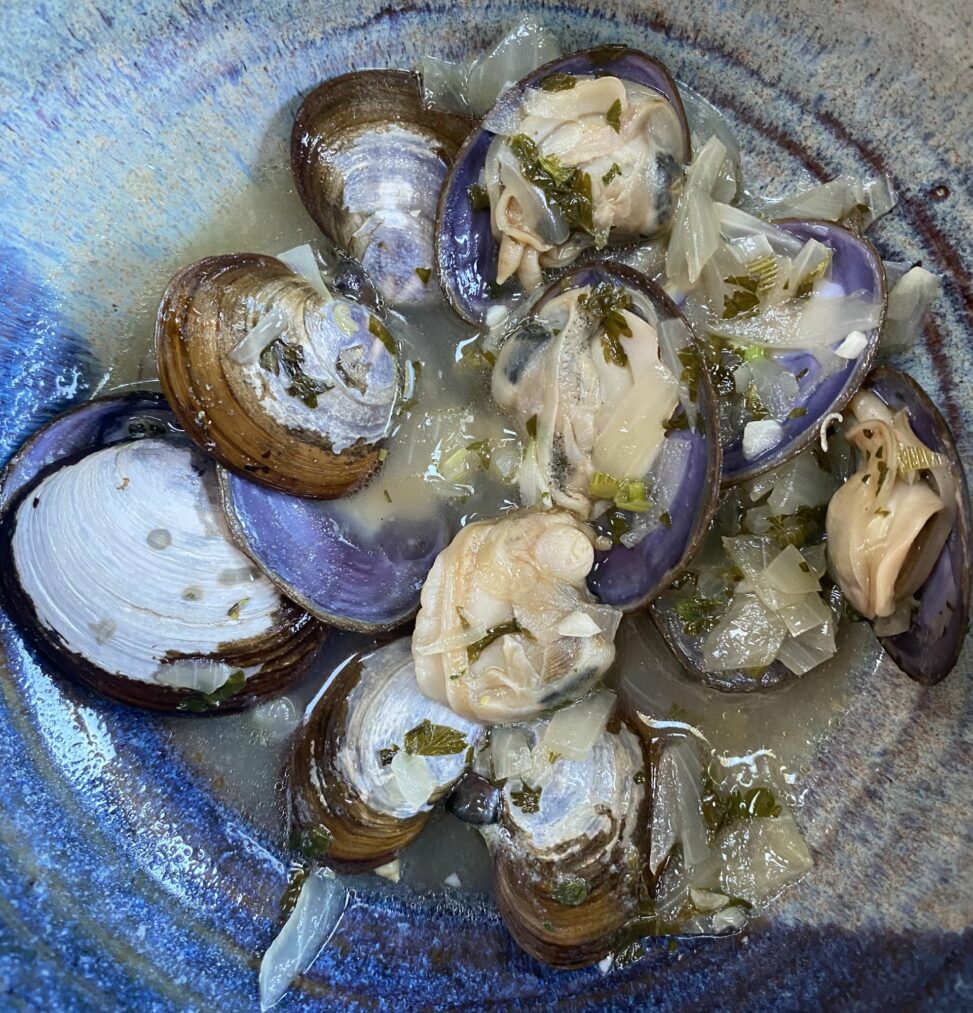
Leave a Reply
You must be logged in to post a comment.